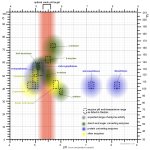I read in Beersmith articles the correct pH measurement range is 5.2 to 5.6. But, these articles and others rarely say whether that is at room temp or mash temp and it makes the topic very confusing.....for me anyway.
Especially, after I also read this from Jonathon Palmer's How To Brew page 158:
"Let me state the goal right up front, for best results the mash pH should be 5.1 to 5.5, when measured at mash temperature, and 5.4 to 5.8 when measured at room temperature."
So, what is the 5.2 to 5.6 in all the Beersmith articles? Sounds to me must be at mash temp. And what about the magical 5.2 a lot people talk about, is that at mash temp, and therefore 5.5 at room temp? If not, it is out or range.
The big issue for me is if people (inc. me) are aiming for 5.2 at room temp, that is 4.9 at mash temp and too low, out of range.
Especially, after I also read this from Jonathon Palmer's How To Brew page 158:
"Let me state the goal right up front, for best results the mash pH should be 5.1 to 5.5, when measured at mash temperature, and 5.4 to 5.8 when measured at room temperature."
So, what is the 5.2 to 5.6 in all the Beersmith articles? Sounds to me must be at mash temp. And what about the magical 5.2 a lot people talk about, is that at mash temp, and therefore 5.5 at room temp? If not, it is out or range.
The big issue for me is if people (inc. me) are aiming for 5.2 at room temp, that is 4.9 at mash temp and too low, out of range.

